|
The 16th was a Sunday
and the plan for the morning was to go around Blackie Spit with
Ilya. I'd been to Blackie Spit before, but Ilya really knew the
park and had been offering to show me some of its local specialities
for quite some time. I had finally gotten my act together to set
a date, and the date had arrived.
Our main target bird
was the Long-billed Curlew. Our time at the spit started and ended
with rain, but for most of the time that we were out, the rain
held off. However, it was still a cold and windy day. Heck, even
the Western Meadowlarks found it windy. There was a pair of them
that popped by to see us.
|
|
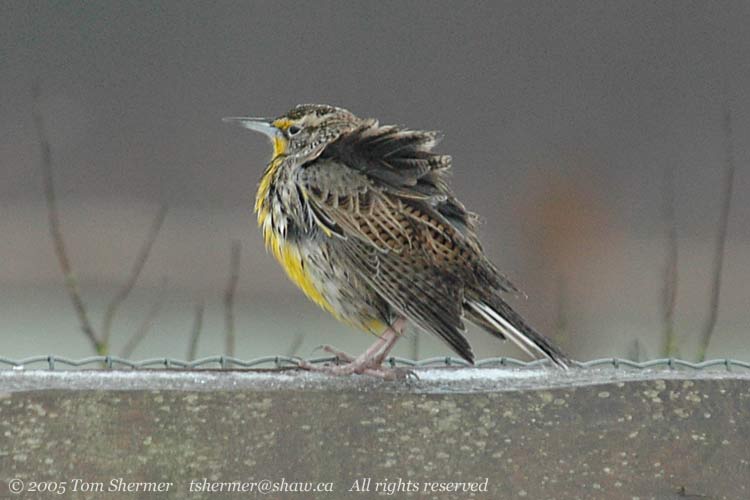 |
| On the sheltered
side of the spit, we got our first look at the curlew as it flew
away with a bunch of ducks that flushed as we approached the fence.
There we spotted some other shorebirds and I amused myself by taking
photos of a Common Loon who was floating nearby. |
|
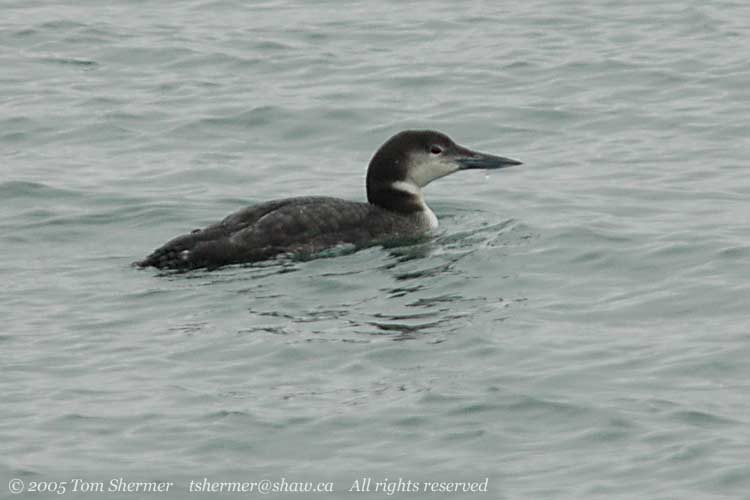 |
| Deciding
to head towards the gardens, we encountered the meadowlarks again. |
|
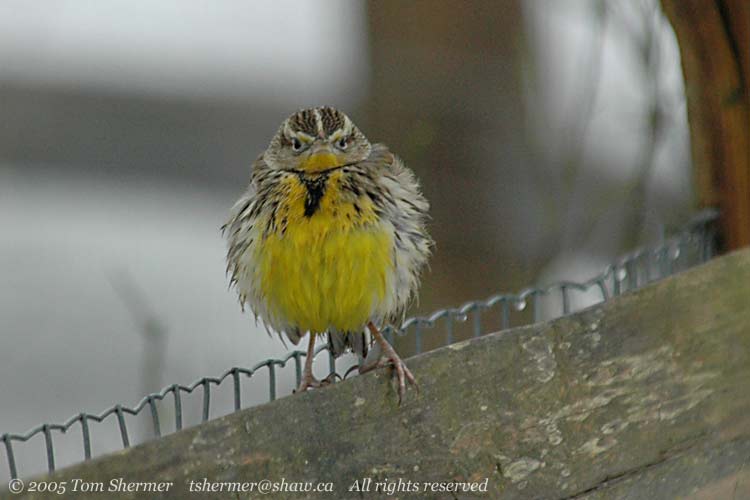 |
|
Looking over the fence
near where the meadowlark was, and over Farm Slough, we found
three Marbled Godwits hanging out with some Long-billed Dowitchers
and Greater Yellowlegs.
|
|
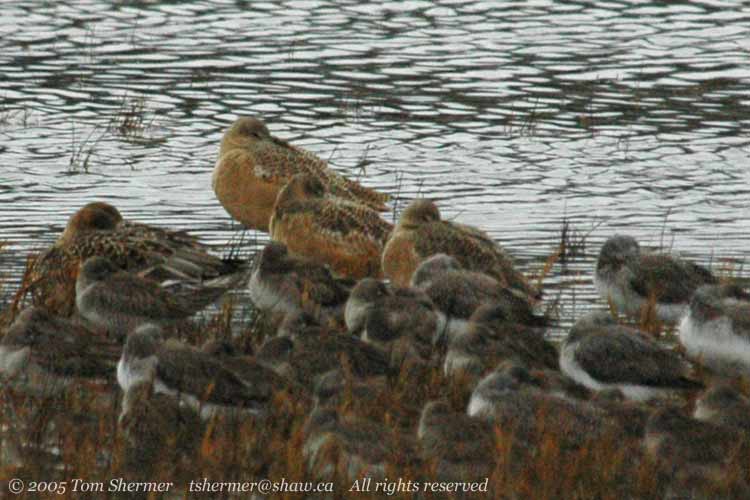 |
|
But then the godwits
were gone, flying over closer to the gardens near where the curlew
had landed.
We continued on over
to the channel near Dunsmuir Gardens. A flight of six eagles flew
over us. Here's one, who looks to be two or three years old.
|
|
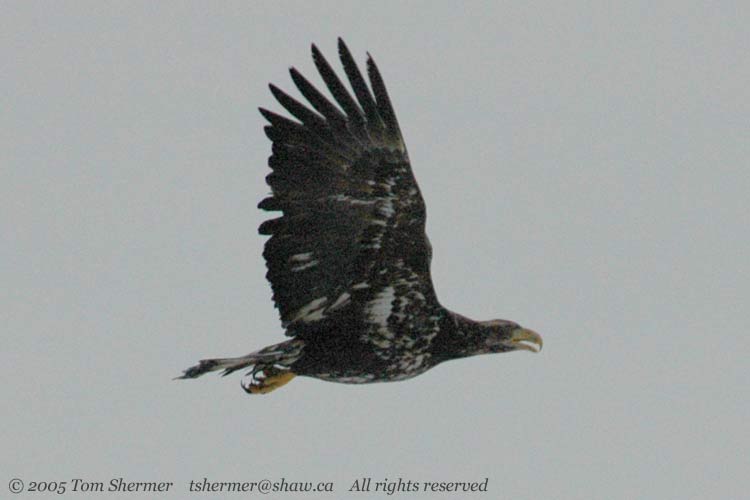 |
| In the channel,
we found a male Gadwall who thought he could walk on water. |
|
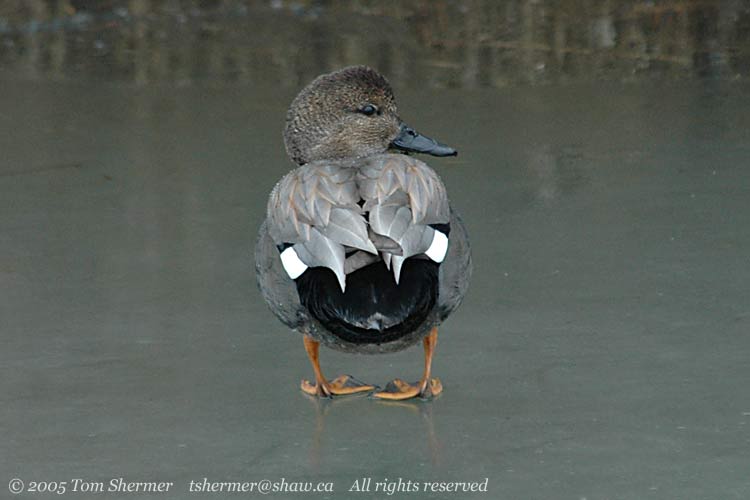 |
|
Well, he could, but
that was only because it was frozen.
We came to the part
of the trail closest to the rail trestle, and looked out over
the gate at a small lump of land where the Marbled Godwits and
Long-billed Curlew were, surrounded by a mass of dabbling ducks.
I took some photos, but the curlew was facing away from us and
kept his head down, so I didn't get any good shots. Just then,
though, fortune smiled on us, and something caused the birds to
become alert. The godwits and curlew popped their heads up, and
I got a few photos of them. Here's two of the shots that show
the bill on both curlew and godwit. The curlew, in the back, has
a downward-curling bill, while the godwit, in front, has a more
straight bill.
|
|
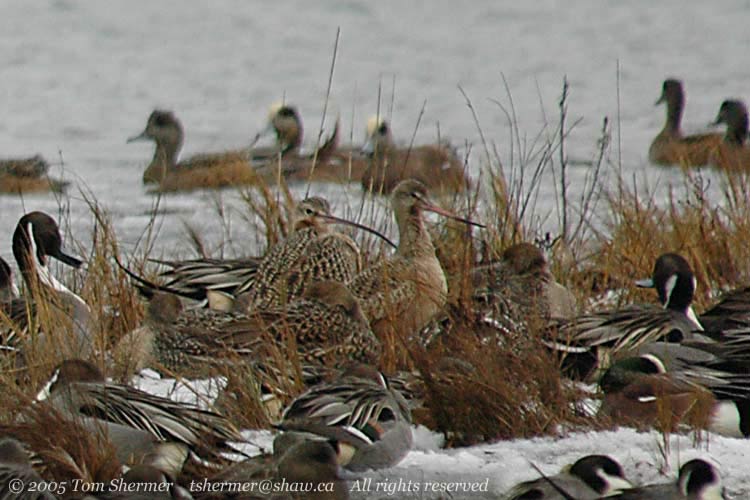 |
| The curlew's
bill is seriously long. |
|
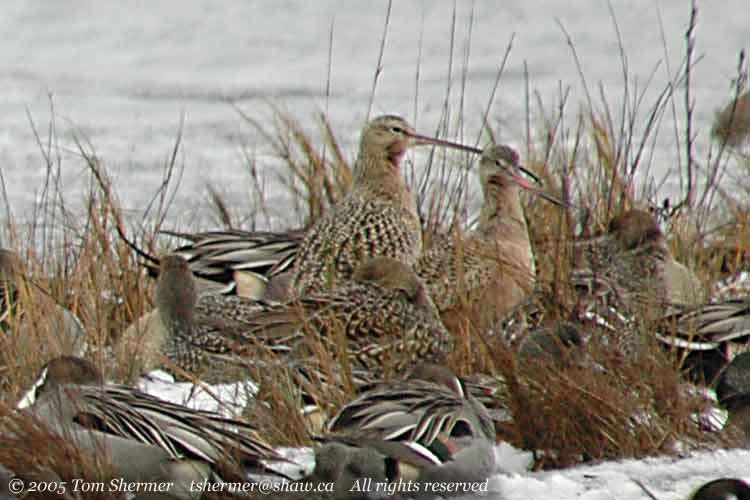 |
| Ilya and
I continued on to Dunsmuir Gardens. There we walked up towards a
Great Blue Heron. |
|
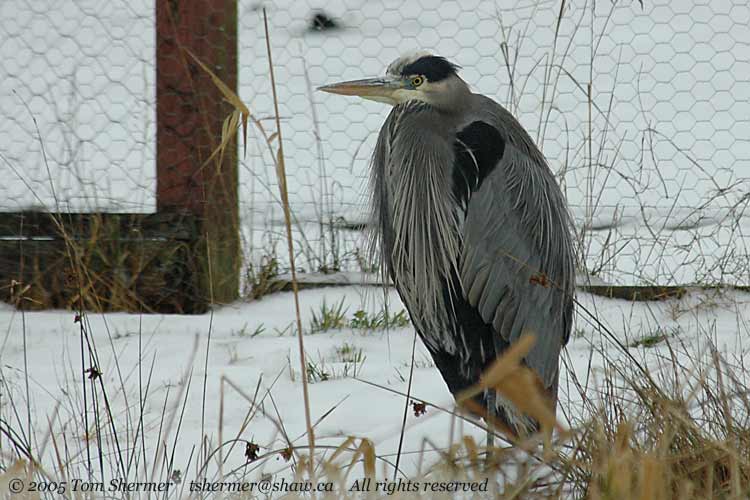 |
|
The heron didn't really
flush as we were walking towards him; he just sort of trundled
off away from us. Eventually we did get close enough that he took
flight, however.
The heron had been
leaving tracks in the fresh snow.
|
|
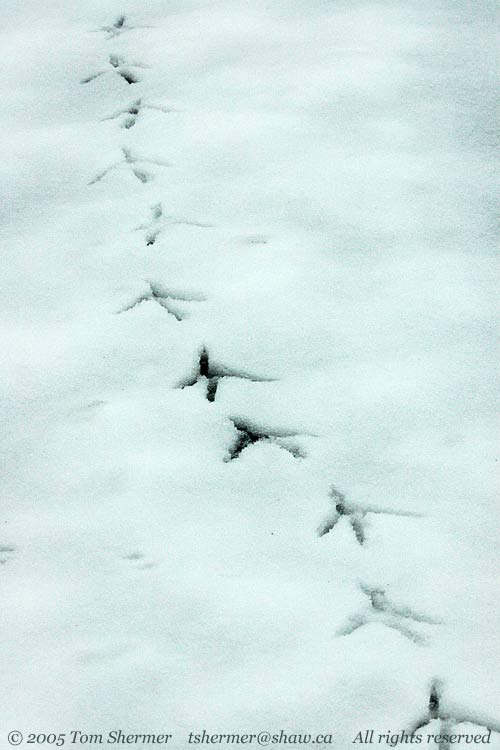 |
| And so had
a rabbit. |
|
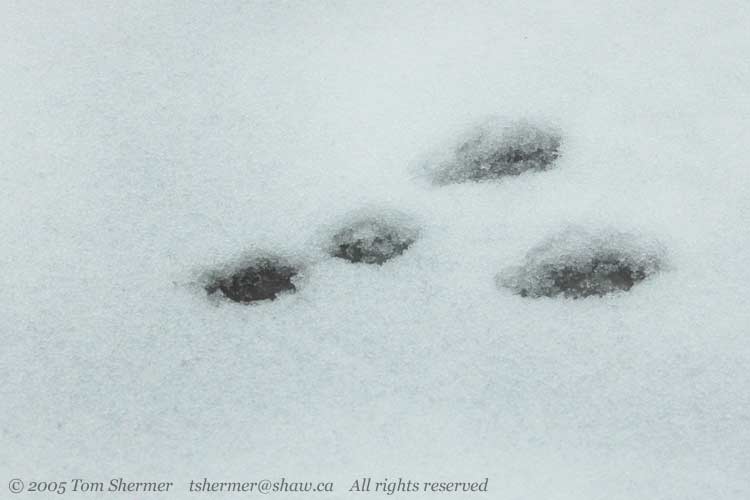 |
|
I find rabbit tracks
quite interesting, because the impression left by the two front
feet are one-behind-the-other, not one-beside-the-other. They
must balance like a tripod with an extra leg in the center.
There were some robins
and a trio of Cedar Waxwings eating berries from a nearby tree.
Ilya spotted an adult eagle in a conifer a little ways away and
we watched an immature come in and land underneath him.
We searched for sparrows
and found Golden-crowned, Fox, Song, Spotted Towhee, and Dark-eyed
Junco. I got a few photos of them but nothing really worth showing.
I did spend some more time on the robins and waxwings, though.
Here's a robin, looking pretty dapper.
|
|
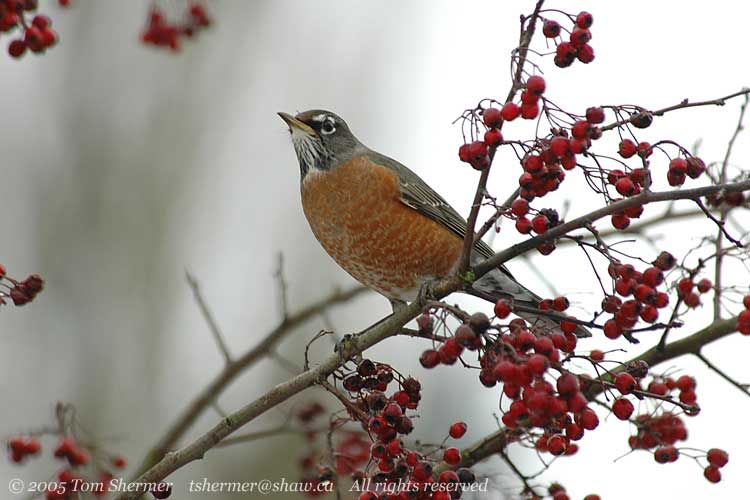 |
| And here's
a Cedar Waxwing, from below. |
|
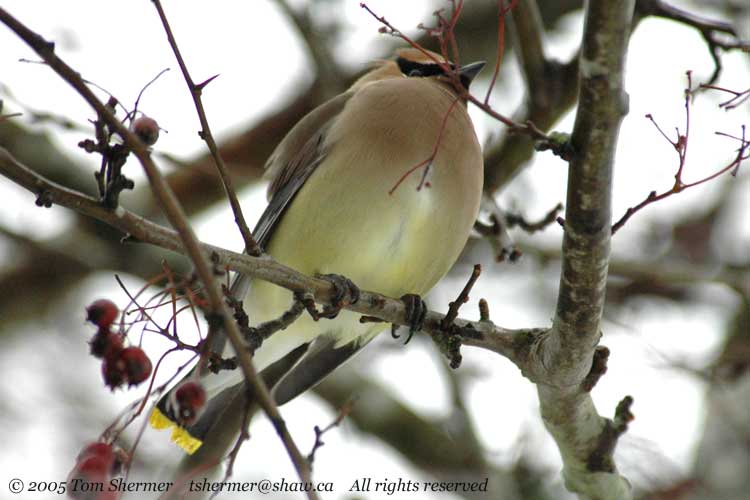 |
|
Both the robins and
the waxwings were showing pretty vivid color. One of our last
birds in the gardens was a Winter Wren, who was unfortunately
too quick for me to get a photo of. I haven't ever gotten a good
photo of a Winter Wren.
We left the gardens
and headed towards the pier on the exposed side of the spit, and
the beach in front of some houses nearby. On the way I took a
few more photos of the godwits and curlew, and some of another
blue heron that was near the path. A Sharp-shinned Hawk flew by
in the distance, and we chased another Winter Wren for a little
while.
(For you out-of-towners,
Blackie Spit is in Crescent Beach, which is the name of a community
in a town called White Rock, which itself is in the city of Surrey.
You'll need some of that information to make sense of the parenthetical
nonsense in the following paragraph.)
Ilya and I arrived
at the pier, and found a white Rock Dove who was wearing a very
pretty green anklet. .(Or should that be a White Rock dove? Or
a white White Rock rock dove? And what would we say happened if
it took a dive?)
|
|
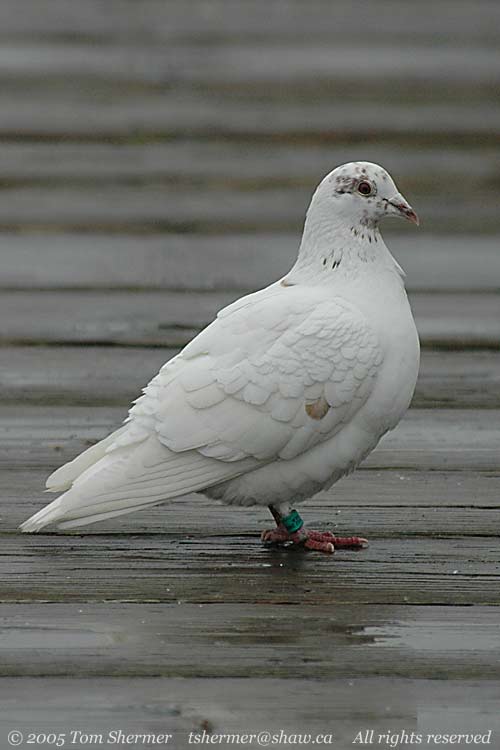 |
| From the
pier, I got some photos of a Horned Grebe. |
|
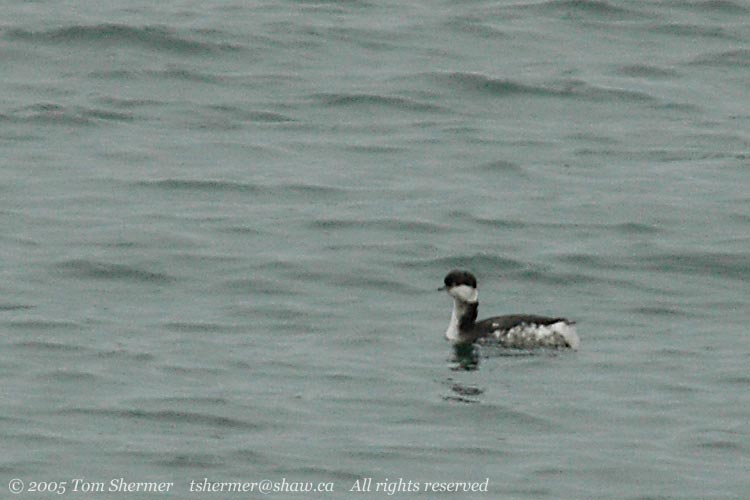 |
|
also got a few distant
photos of a Common Goldeneye.
We headed up the beach
to the bend to set up the scope and look for Long-tailed Ducks.
Along the way, Ilya found a Brown Creeper and a Golden-crowned
Kinglet in a tree. It was too dark under the tree to get good
photos, though. A few paces later, there were two eagles in a
tree right beside a house; they took off and flew away, one of
them passing quite near us.
Back at the beach,
we didn't find any Long-tailed Ducks. However, there were some
White-winged Scoters, Surf Scoters, and Bufflehead at a medium
range. They were hard to get decent photos of, but here's one
of a White-winged Scoter playing with its food.
|
|
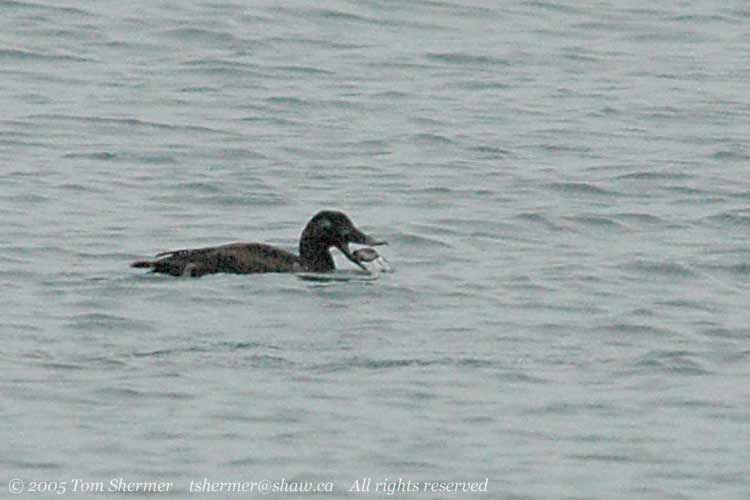 |
| Occasionally,
a Double-crested Cormorant would fly by, close to the water. |
|
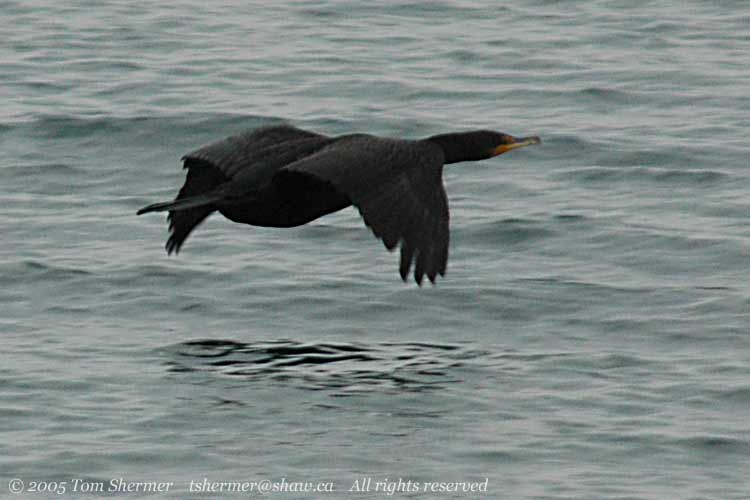 |
| Curiously
enough, we found a few shorebirds where I'd never had thought to
look for them--along the shore. Most numerous were the Dunlin. |
|
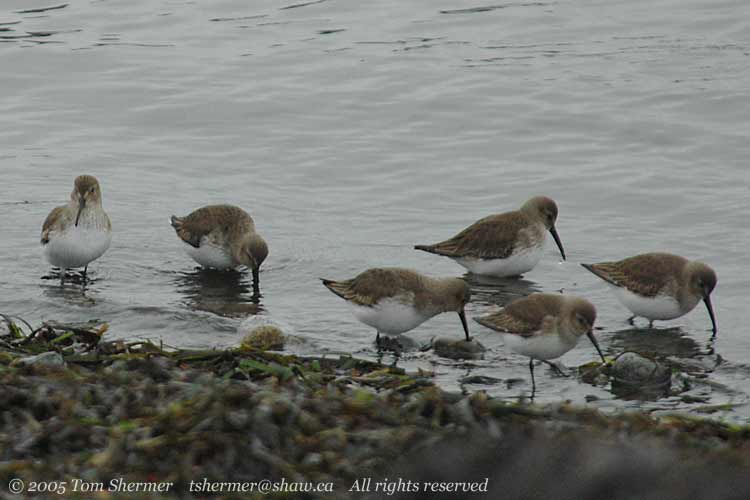 |
|
There were also two
Black-bellied Plovers, two Sanderlings, and a Kildeer.
The Black-bellied Plover
is bigger than the Dunlin, but has a much shorter bill.
|
|
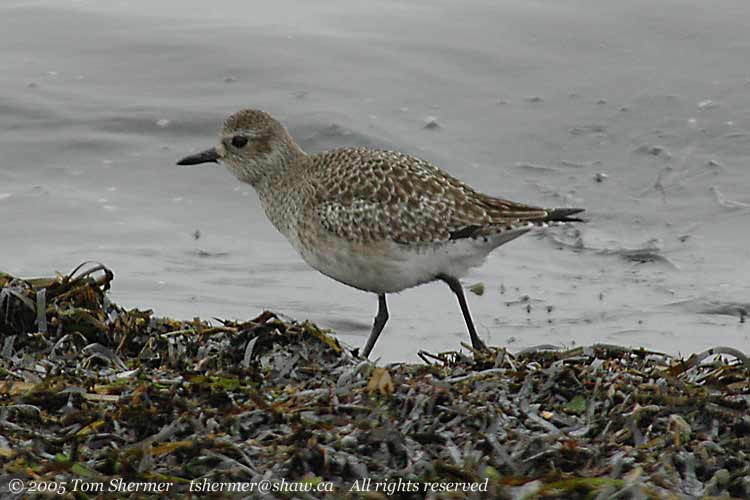 |
| The Sanderling
is about the same size, but much whiter. Here's a Sanderling to
to the right of a Dunlin. |
|
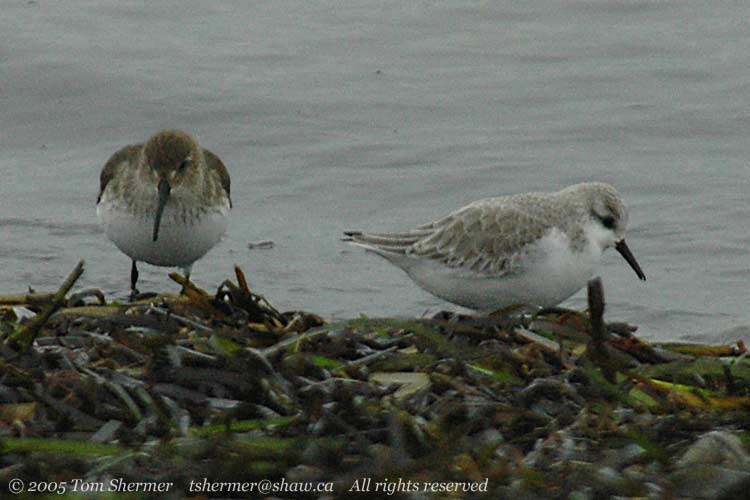 |
| The Kildeer
is a type of plover, and like the Black-bellied, it's bigger and
has a short bill. It also has an unmistakable black double-necklace,
distinctive head markings, and a habit of making a lot of noise.
This particular individual was pretty quiet for a Kildeer, though. |
|
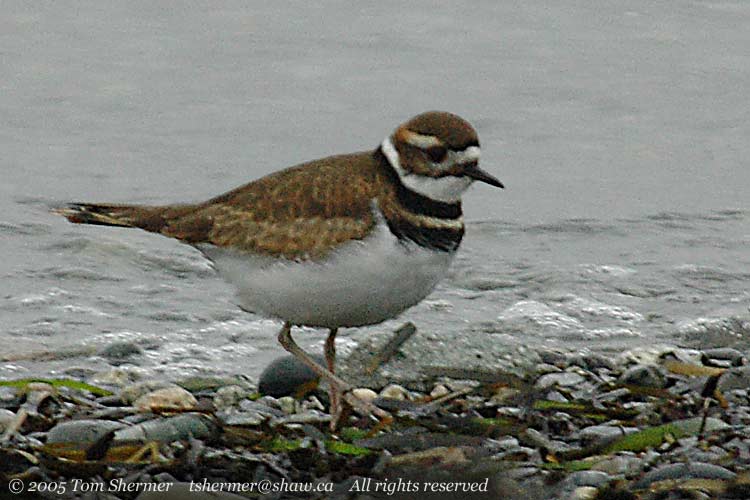 |
|
It was now 1:00 (we
had started around 9:15) and we decided to head back to the car.
Along the way, we found the following gull, which we surmised
was a Western Gull. Later we showed the photographs to people
more experienced with gulls and got confirmation of our assessment.
Westerns are not the most common of gulls around these parts.
|
|
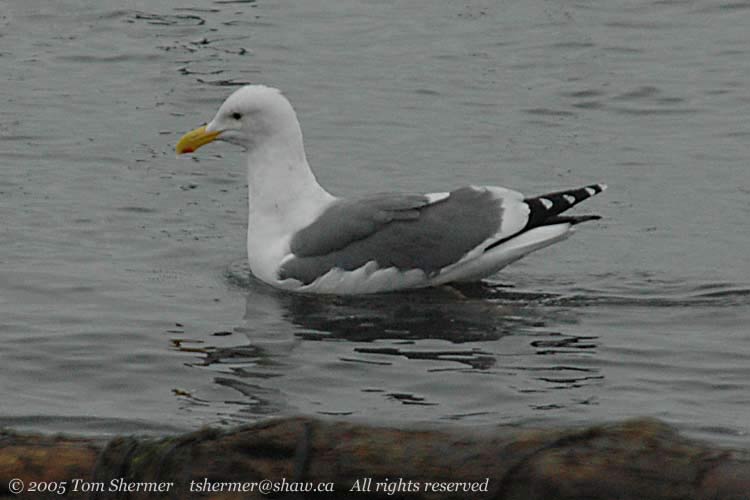 |
| We also
found the following sight, which was very odd. That's a Song Sparrow
out there by the water. Song Sparrows like to hop around on the
ground and in low bushes, and one does not frequently find them
out where one expects ducks or gulls. |
|
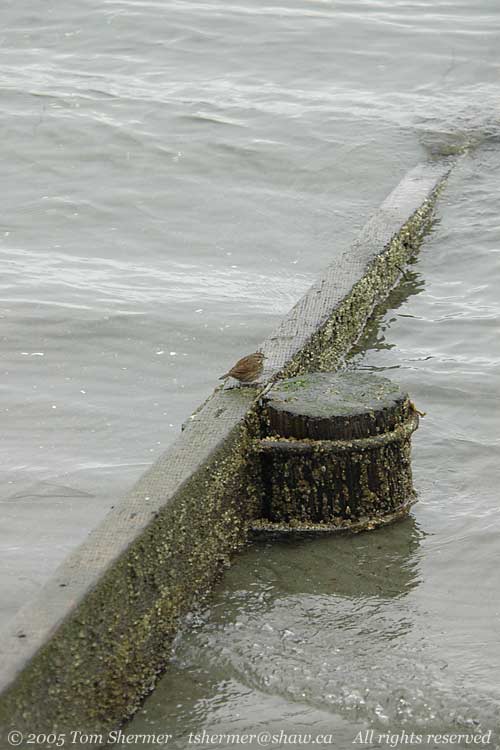 |
| As a final
treat, right when we got to the parking lot, Ilya spotted a Merlin
in a tree above us. I was able to fire off a few photos before it
took off, and during its flight. Here's one sitting photo and one
flying photo. |
|
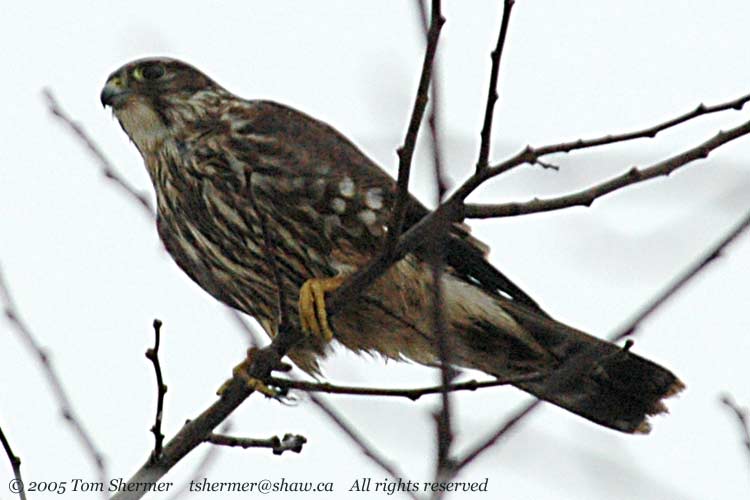 |
| |
|
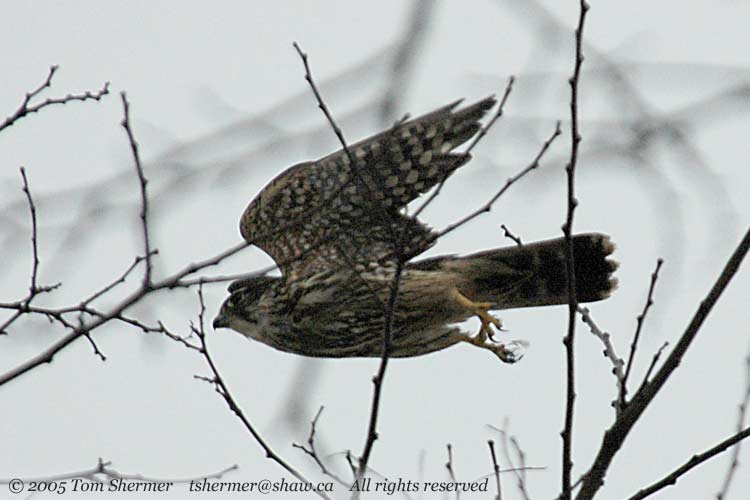 |
|
The Merlin is a type
of small falcon; it's about 25 cm. (10 in.) long. It's not the
smallest of North American falcons, though—that honor goes
to the American Kestrel, which averages about 3 cm. shorter.
Anyhow, despite the
frigid weather, or perhaps because of it, we had an excellent
morning of birding. (I think having Ilya as my tour guide helped
quite a bit, too.) Rather than braving the elements again, I spent
the rest of the afternoon warming up and sorting through my photos.
Wondering if there's
a falcon called Morgana,
Tom
|
|